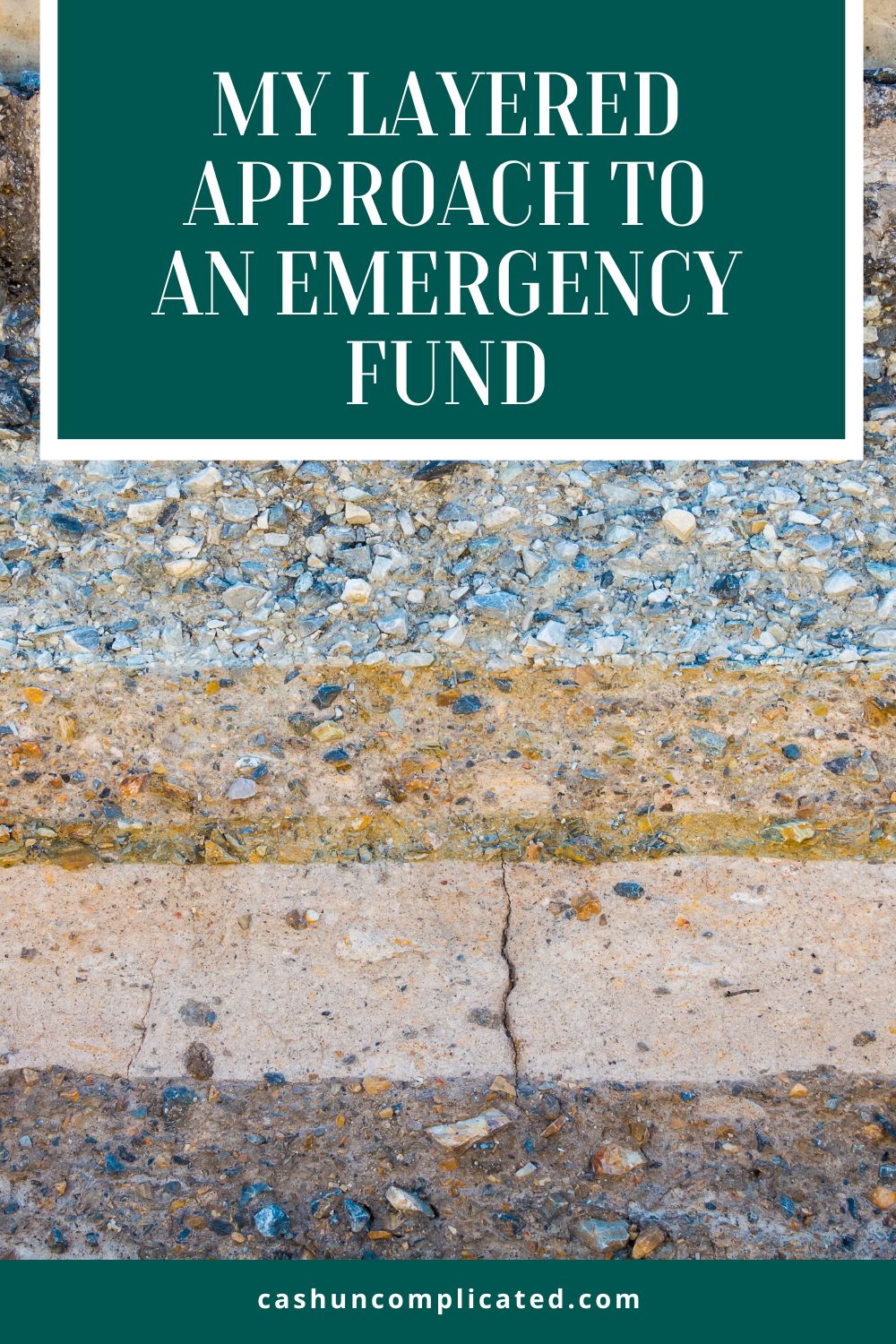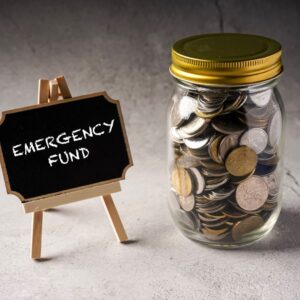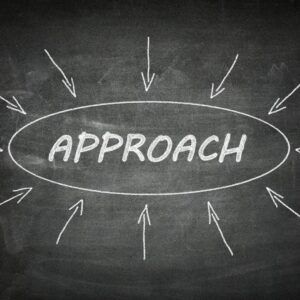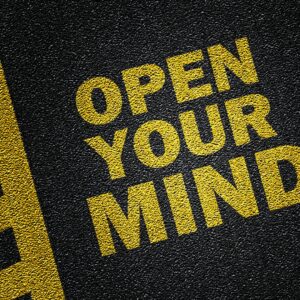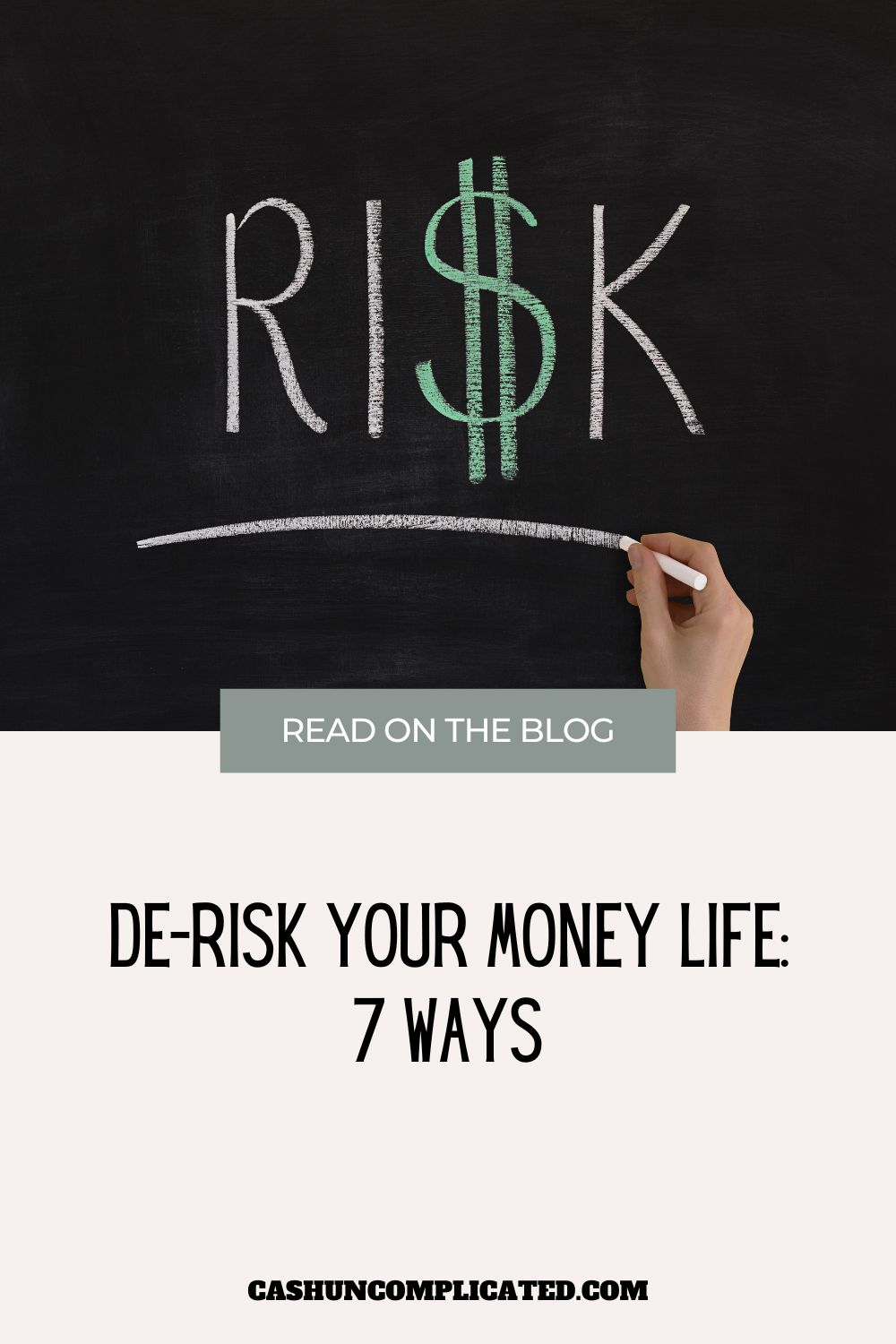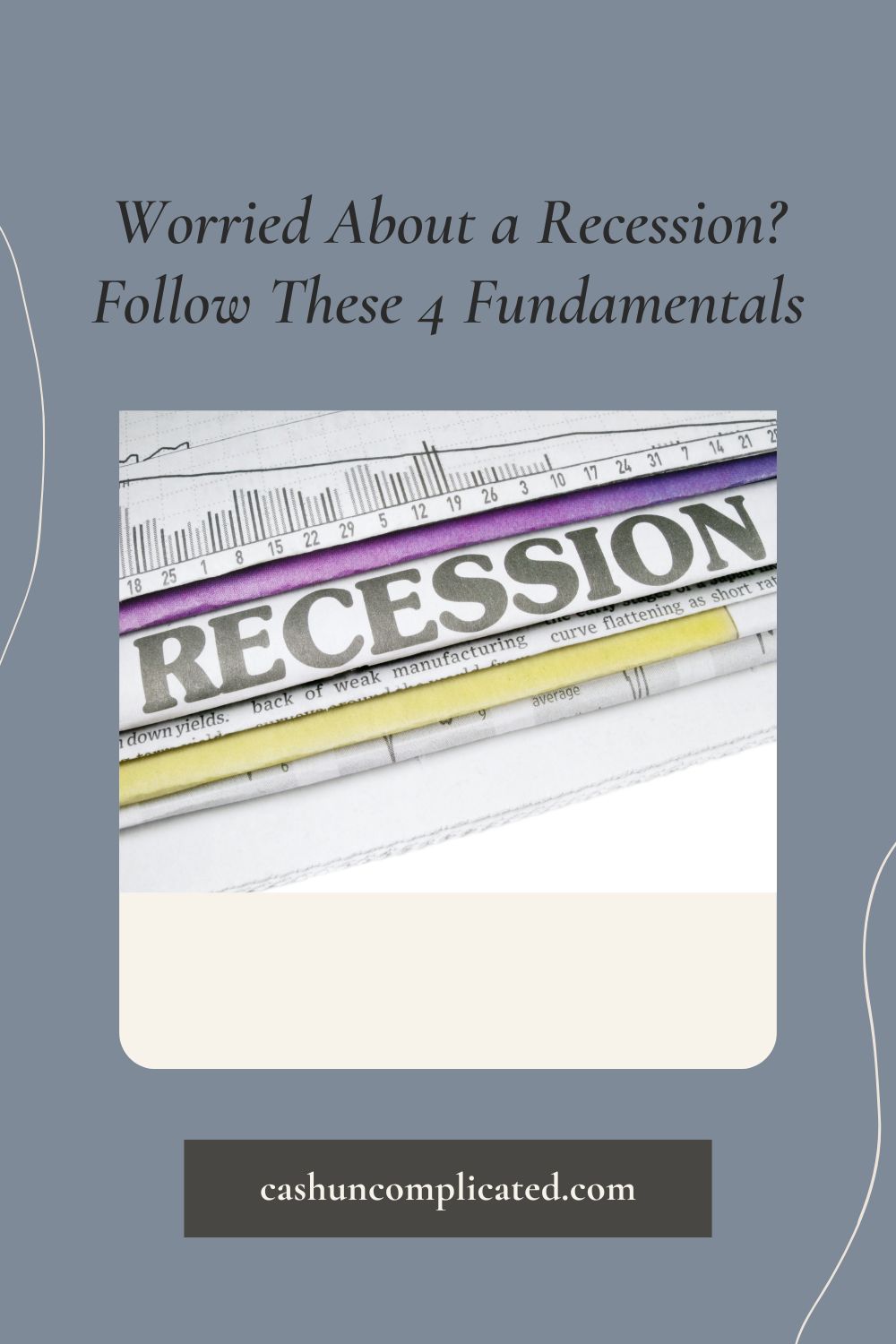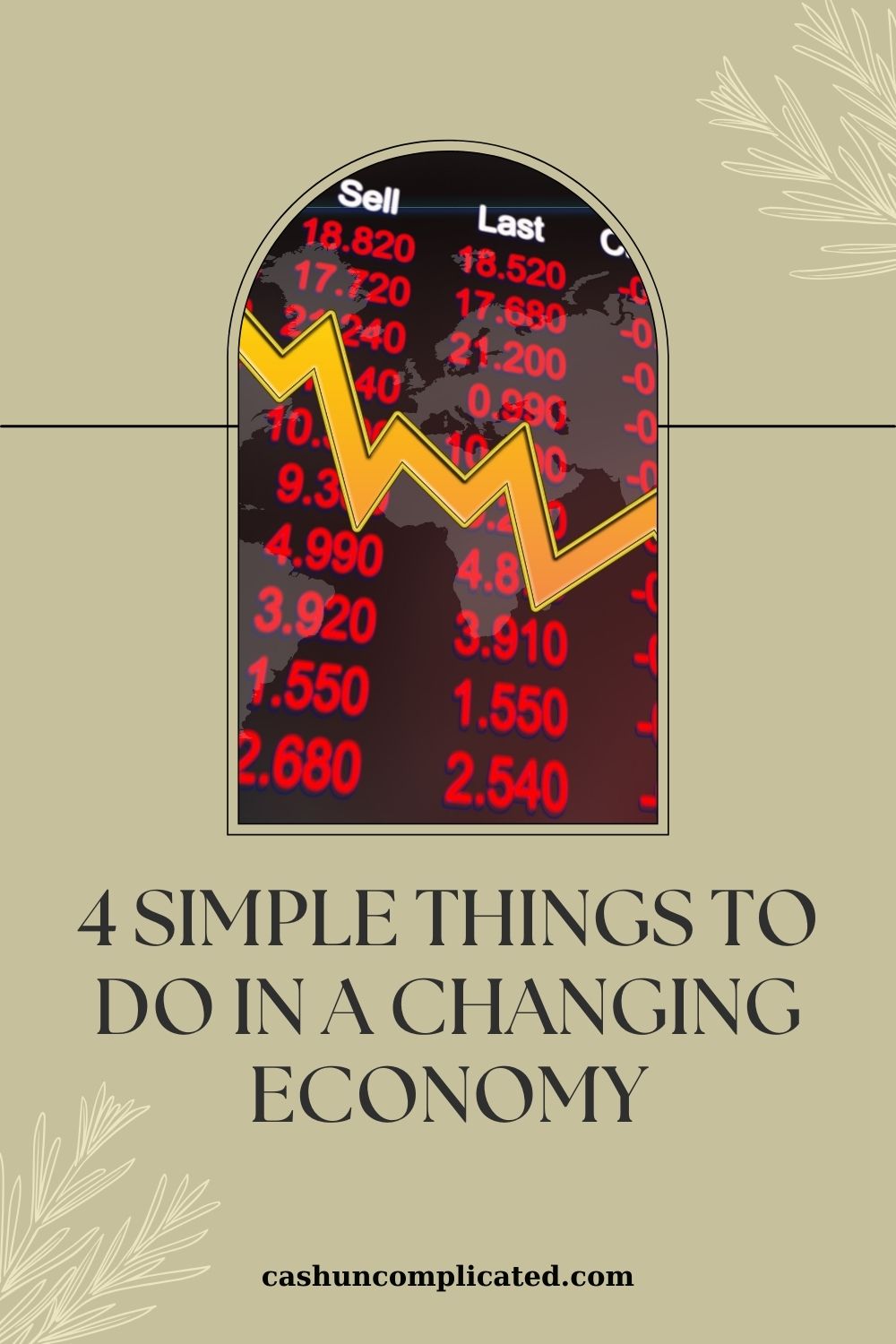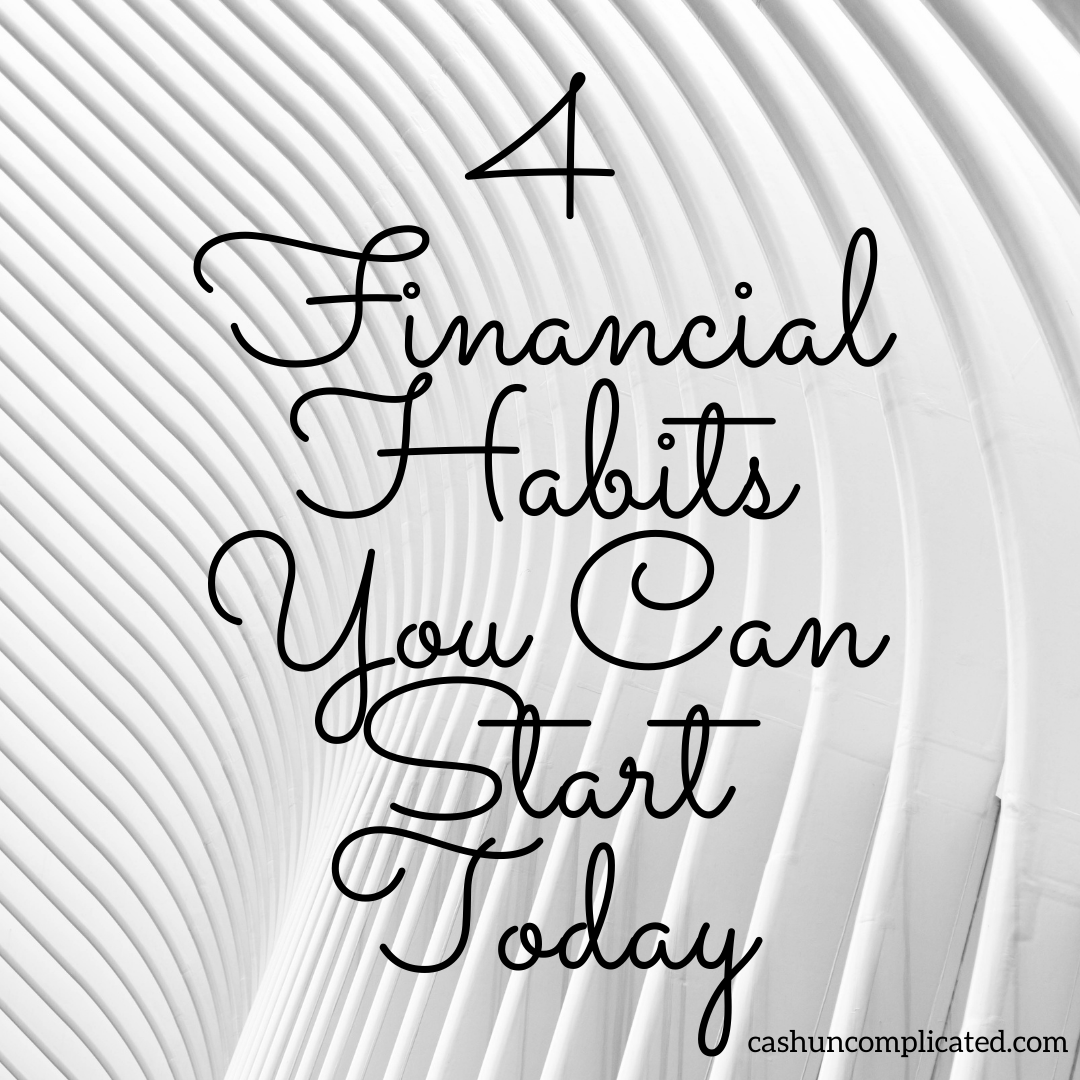Most personal finance experts and advisors recommend between three to six months in an emergency fund. That’s normally thought of as cash in a savings account (ideally high-yield) that’s easily accessible. I’ve taken it a step further with a layered approach to my emergency fund.
What is an Emergency Fund?
An emergency fund is a set amount of money put aside for emergencies such as:
- Major car repair
- Deductible on an insurance claim
- Loss of income (job loss, below average sales, etc)
- Large home repair
An emergency fund is designed to cover these unexpected expenses without having to dip into your investments or accumulate credit card debt. For more on emergency funds, see these posts:
- How Much of an Emergency Fund Should You Really Have?
- Why the Pandemic Prompted Me to Increase My Emergency Fund
Why Have an Emergency Fund?
It’s important to have an emergency fund because life takes unexpected twists and turns. You never know when something is going to happen. The emergency fund prevents the unexpected and unwanted large expenses from turning into a crisis.
If I’ve learned anything in life, it’s that the unexpected occurs. Of course nobody can predict when a hailstorm is going to damage the roof beyond repair, or the car is going to catch fire in the middle of the highway (true story). But these types of things do happen and an emergency fund is there for when they do.
Think of an emergency fund as another form of insurance against the unexpected.
Traditional Advice
The traditional advice is to have three to six months of an emergency fund. Some experts even recommend up to a year, especially for those with unpredictable job situations. I think this is all good advice.
The important thing to remember is that personal finance isn’t just about optimization or what you “should do.” It has to work for you and your family. Some people might want a little more cushion to help them sleep better at night (including me).
What Is a Layered Approach to an Emergency Fund?
A layered approach to an emergency fund is dispersing your money across different areas instead of just a checking or savings account. A few examples using six months of savings:
- Two months in checking, four months in savings
- One month in checking, one month in savings, four months in a high yield savings account
- One month in savings, five months high yield savings
All three of these options are liquid and provide easy access to the money when needed. I don’t necessarily recommend any of these combinations, they are just examples.
Why Take a Layered Approach?
So why take a layered approach to an emergency fund instead of throwing it all into checking or a low yield savings account? The simple reason is inflation.
If there is over eight percent inflation like there has been, money earning zero interest is losing over eight percent of its purchasing power. In other words, it’s worth less a year from now than it is today.
However, if that money is put into a high yield savings account that earns four percent, the money isn’t losing as much purchasing power. It still will lose value to inflation but the losses are minimized.
Downsides to an Emergency Fund
In my opinion, there are only two downsides to an emergency fund. Number one is opportunity cost, meaning any money that’s in an emergency fund can’t be invested. That’s money that can’t be put in the stock market, real estate, or anything else with potential for high growth.
Number two, it’s money that will most likely be eroded by inflation. Especially reserves not kept in a high yield savings account. Simple examples using eight percent inflation:
- A savings account with 0.5% interest rate will lose 7.5% to inflation
- Money left in a checking account earning no interest will lose 8% to inflation
- A high-yield savings account with an interest rate of 4% will lose 4% to inflation
It’s important to recognize the downsides, but also understand there’s a very clear purpose behind holding reserves.
My Layered Approach
This is the layered approach to my emergency fund. First, I want to point out that I’ve evolved in my thinking and strategy around an emergency fund. I used to be comfortable with three month of reserves, but switched to six a few years ago.
That’s despite having a predictable source of income.
Secondly, I actually have moved even more conservative over the last year. I am now keeping six months in a high yield savings account but adding on to that with a more layered approach.
When I-Bonds were providing high interest last year of over 9 percent, I took advantage and put four months of reserves into them. I plan on keeping those reserves there until interest rates fall under a certain threshold.
Note: money cannot be pulled from this account within the first year. For more information on I bonds, see the Treasury Direct website.
With interest rates rising, I’m also going to be putting money into a CD so I can get a little better rate than a savings account, probably between three and four months.
So my new emergency fund will look like this:
- Six months in a high yield account
- Four months in I-Bonds
- Three to four months in a CD
The strategy behind it is I’ll have six months easily accessible, which is a great base. Additionally, I’ll have some extra cushioning with the I bonds.
If I really need it, I can pay the penalty and take money from the CD before maturity. I’m not likely to need the money from the CD, but I know I’ll sleep better at night knowing it’s there.
What Works For Me May Not Work For You
This is a simple statement, but it’s true. What works for me may not work for you. I personally like having a layered approach to my emergency fund. It gives me the security and peace of mind knowing I have several months of financial runway if something goes wrong.
And if something continues to go wrong or something new comes up, I know I have a few more months after that with the layered approach.
It keeps me from having to tap into my investments, while at the same time earning a little more money in interest than a run of the mill savings account.
That may not work for you though. You might:
- Prefer to have a smaller emergency fund and invest very aggressively with all available money
- Want to keep a year plus in a high yield savings account
- Not have enough money to have more than a few months
Whatever your situation is, work with what you have, as long as it’s in alignment with your goals. Find what works for you and know that personal finance isn’t one size fits all.
You Can Change Your Mind Along the Way
This is something I’ve learned over the years: you can change your mind along the way. What worked for you as a 26-year old probably won’t work for you as a 50-year old.
Having two to three months of an emergency fund when you were 23 probably worked fine back then because you didn’t have many expenses or responsibilities.
That’s not going to work for you now that you’re 42-years old with a spouse, two kids, and a mortgage. The 42-year old you is more than likely going to want more of a cushion.
So don’t be afraid to change your mind. It’s all part of having a growth mindset, learning, getting better, and making choices that fit your current situation.
Recommended Book:
Using myself as an example, I currently like the way I have allocated my personal finances. I know that in 20 years when I’m 64 I probably will change some things to fit my situation at that time.
Final Thoughts: Layered Approach to an Emergency Fund
There’s no rule stating that an emergency fund has to be layered or kept in one account. It’s about what works for your given situation and personal finance goals. The important thing is that you have an emergency fund because things can, and do go wrong.
I take a layered approach because it allows me to have a nice base of several months in a high yield savings account, plus the extra cushion in other accounts that earn slightly higher interest. That also keeps me from having to dip into investments where I run the risk of selling low.
Do you take a layered approach to your emergency fund or keep it in one account?

